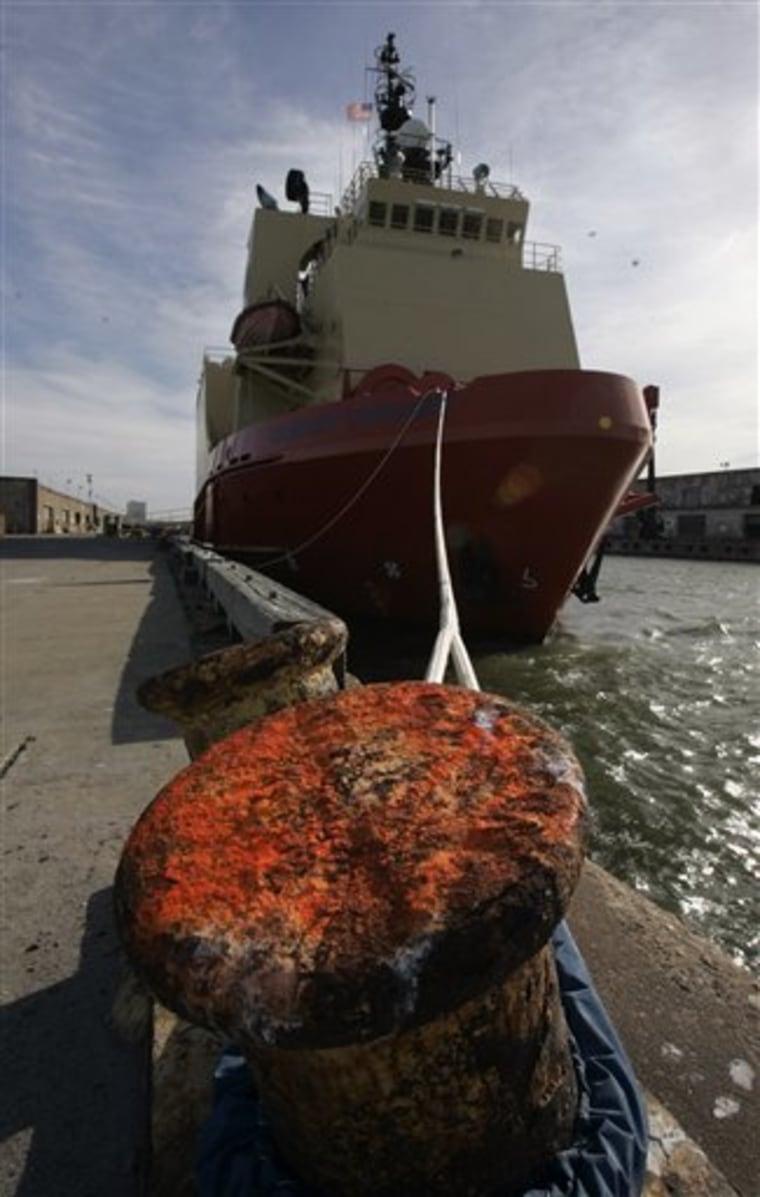Famed undersea explorer Robert Ballard is leading a team of scientists heading into the Gulf of Mexico for a weeklong examination of Texas' ancient shoreline to see if anybody may have lived there.
Ballard, whose discoveries include the wrecks of the Titanic and the German battleship Bismarck, is among dozens of geologists, biologists and marine archaeologists exploring the Flower Garden Banks National Marine Sanctuary, a protected area of underwater salt domes that are topped with reefs that host brightly colored sponges, plants and other marine life.
But 15,000 or more years ago, with much of North America locked in the last Ice Age, water levels of the Gulf of Mexico were 200 feet lower, meaning the area was the Texas shoreline some 100 miles south of where it is now.
The estimated $300,000 project will examine what scientists believe are those ancient shorelines. The team will leave from Galveston on Friday.
"Certainly a major part is our quest for evidence of human habitation in the Flower Garden regions during the last Ice Age," Ballard said Thursday.
For Ballard, the deep-sea expedition will be the first in more than 100 over a 40-year career where he's not actually on or under the water. Instead, he'll be at a command center in Mystic, Conn., one of six centers around the country where scientists will be monitoring the mission in real time with high-definition television images sent over satellite and Internet links.
"It's going to be an interesting experience — not at sea." he said.
It's also a test run for explorations involving a new National Oceanic and Atmospheric Administration research ship joining the fleet next year. Missions from that ship, and other research vessels, will be done more like this one with scientists in onshore locations, Ballard said.
"This is really a groundbreaking experiment," he said. "More importantly, now I can go on many many expeditions."
Dwight Coleman, a University of Rhode Island oceanographer and the mission's chief scientist, said researchers are in general agreement the oldest human habitation in North America is about 12,000 years ago. A discovery earlier than that would be historic.
"We don't know if people were really living on the shelf," he said of the Gulf area they'll be exploring. "But we're very interested. We don't know if we're going to find any remains or archaeological material."
Fishermen long have been pulling up mammoth or mastodon bones, arrowheads and other evidence of prehistoric life off the North American coasts, but firm evidence to tie it together has been evasive.
"We're going to use technology to take the water out, peel it away," said David Robinson, one of the mission archaeologists. "We might get lucky."
Ballard said one thing to look for would be evidence of salt formations tapped and mined by people.
"If you can imagine 20,000 years ago, salt would have been an important commodity," he said. "If we find something significant, we'll be back in spades with more sophisticated equipment."
Teams involved in the project include NOAA, the agency that manages the sanctuary; Ballard's Immersion Presents, a science education program for children in grades 5-8, along with his Institute of Exploration, which develops deep sea research vehicles; the University of Rhode Island, where Ballard is a professor of oceanography; and the U.S. Navy.
They'll be using two ships, a nuclear-powered research submarine, a remotely operated underwater vehicle and scuba divers in the search.
The reefs are in waters ranging from 55 to 160 feet, but researchers are most interested in the deeper areas difficult for scuba divers to reach and plan to use the Navy research submarine and remote-controlled vehicle.
Other command centers are at NOAA headquarters in Silver Springs, Md.; Seattle; the University of Rhode Island; University of New Hampshire; and Smithfield High School in Smithfield, R.I.
Ballard plans several television programs daily during the weeklong mission that will be broadcast to schools and museums and aquariums around the nation.
